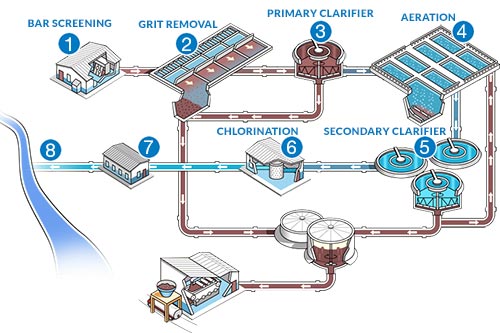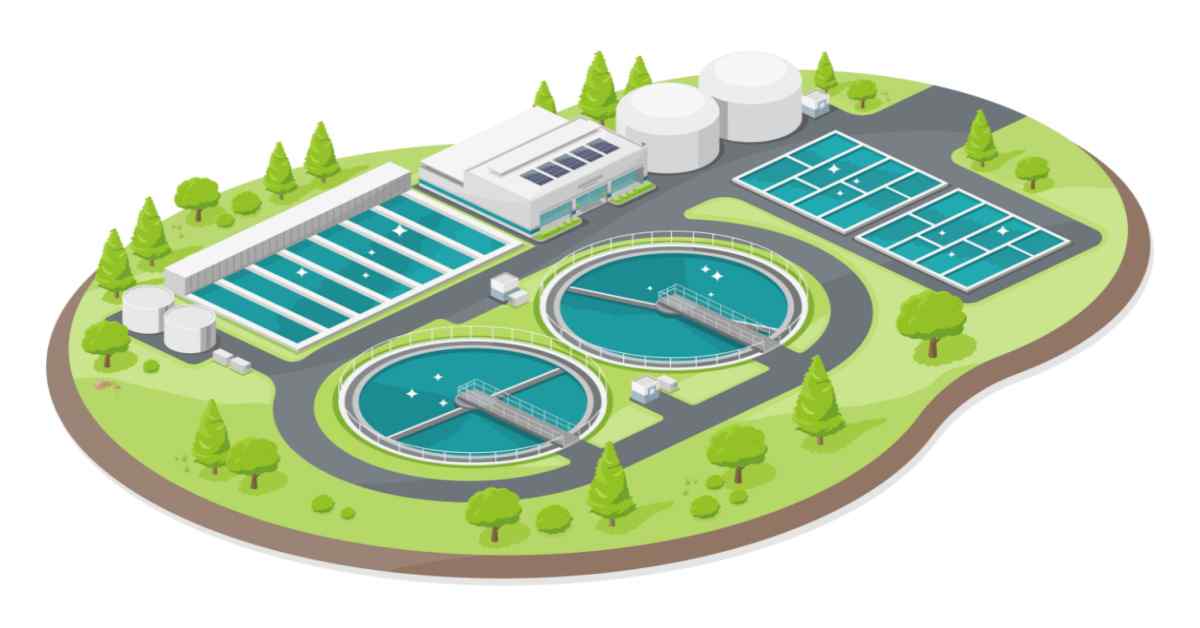Understanding the Role of Effective Wastewater Management
Understanding the Role of Effective Wastewater Management
Blog Article
Understanding Wastewater Therapy Processes and Their Environmental Influence
The ins and outs of wastewater therapy processes play a critical role in mitigating environmental obstacles related to water contamination. Each phase, from initial to advanced therapies, is made to attend to certain contaminants, eventually protecting both public health and wellness and water ecological communities. However, in spite of technical developments in therapy performance, significant challenges continue, consisting of the monitoring of residual pollutants and the implications of nutrient overflow. As we check out the complexities of these processes, it comes to be vital to doubt just how far existing methodologies can advance to meet the growing needs of sustainability and environmental preservation.
Overview of Wastewater Therapy
Exactly how is wastewater transformed into a secure source for the setting? Wastewater treatment is a vital procedure created to eliminate contaminants from utilized water, thus guarding public wellness and shielding communities. This process starts with the collection of wastewater from property, commercial, and business sources, which is after that guided to treatment centers.
At these facilities, numerous physical, chemical, and organic approaches are utilized to treat the wastewater. Consequently, biological treatments, such as turned on sludge processes, use microbes to break down natural issue.
The dealt with effluent can be securely discharged into natural water bodies or recycled for irrigation and commercial functions, promoting resource conservation. Furthermore, the therapy process generates biosolids, which can be repurposed as plant foods or soil modifications, even more enhancing sustainability.
Stages of Treatment Procedures
The wastewater therapy procedure typically is composed of three main stages: preliminary, key, and secondary treatment. Each phase serves an unique role in minimizing the pollutant tons and making certain the effluent fulfills ecological requirements before discharge.

The primary therapy stage concentrates on the physical splitting up of suspended solids from the wastewater. Via sedimentation, heavier fragments clear up at the bottom of sedimentation tanks, developing sludge, while lighter materials, such as oils and oils, float to the surface and are skimmed off. This process substantially minimizes the natural and inorganic load in the wastewater.
Additional therapy is a biological procedure intended at further reducing the focus of raw material. Numerous methods, including triggered sludge systems and dripping filters, use bacteria to metabolize organic pollutants. This phase is vital for achieving the necessary biochemical oxygen demand (BODY) decrease, ultimately resulting in cleaner effluent ready for discharge or further therapy. Each stage is essential in securing ecological and public wellness.

Advanced Treatment Technologies
Adhering to the second treatment procedures, advanced therapy technologies play an important duty in further boosting the quality of dealt with wastewater. These modern technologies are created to get rid of residual impurities that are not efficiently eliminated throughout key and second therapies, making certain the effluent fulfills strict governing criteria.
Among the commonly used innovative therapy methods are membrane layer filtering, reverse osmosis, and advanced oxidation procedures. Membrane layer purification, including microfiltration and ultrafiltration, is reliable in dividing great fragments, pathogens, and colloids from the water (Wastewater). Reverse osmosis uses semi-permeable membrane layers to eliminate dissolved solids, resulting in top quality water suitable for different applications
Advanced oxidation procedures (AOPs) why not find out more use strong oxidants to degrade natural toxins, including pharmaceuticals and personal care items that are resistant to standard therapy. These methods enhance the biodegradability of intricate substances, facilitating their removal.
Another significant innovation is using organic nutrient removal procedures, which particularly target nitrogen and phosphorus, avoiding eutrophication in receiving water bodies. In general, innovative therapy modern technologies are essential for achieving higher levels of filtration, advertising water reuse, and protecting public wellness while dealing with the obstacles related to wastewater administration.
Ecological Benefits of Treatment
Various ecological benefits occur from effective wastewater therapy procedures that contribute to ecosystem health and sustainability. Mainly, these procedures considerably decrease the release of dangerous toxins right into natural water bodies, which assists preserve water ecosystems. By getting rid of pollutants such as heavy metals, nutrients, and microorganisms, dealt with wastewater reduces the danger of waterborne diseases and advertises biodiversity in marine settings.
Additionally, wastewater therapy facilities usually utilize sophisticated modern technologies that make it possible for water recycling and reuse. This technique not only saves freshwater resources however also minimizes the demand on natural water products. Boosted nutrient elimination from wastewater can also avoid eutrophication, a procedure that results in algal blooms and succeeding oxygen deficiency in water systems.
Furthermore, efficient therapy procedures can decrease greenhouse gas emissions, specifically methane and laughing gas, which are commonly launched during untreated wastewater decomposition. By catching and making use of biogas from anaerobic digesters, facilities can convert waste right into renewable power, consequently adding that site to a decrease in fossil fuel dependence.
Obstacles and Future Fads
While the environmental benefits of wastewater treatment are clear, a number of difficulties continue that impede optimal end results in this area. One significant problem is aging framework, which usually results in ineffectiveness and boosted functional prices - Wastewater. Lots of treatment plants were designed decades back, and their abilities do not align with modern-day needs, that include more stringent regulative standards and higher volumes of wastewater because of urbanization

Looking in advance, there is a growing focus on resource recuperation and round economic situation principles within wastewater treatment. Developments such as anaerobic digestion, which can produce biogas, and progressed purification recommended you read technologies are gaining grip. These approaches not just improve treatment performance however additionally advertise sustainability.
Inevitably, attending to these difficulties needs partnership among stakeholders, financial investment in innovation, and a dedication to recurring research. By welcoming these patterns, the wastewater therapy field can develop to meet the demands of a changing setting and society.
Final Thought
In conclusion, wastewater treatment processes play an essential function in boosting ecological high quality and public wellness. The multi-stage therapy structure, coupled with advanced innovations, efficiently mitigates contamination and promotes sustainable water monitoring. By resolving residual pollutants and decreasing vitamins and mineral drainage, these processes contribute to the conservation of marine ecological communities and the decrease of greenhouse gas exhausts. Proceeded developments and adjustments in treatment approaches will be essential for getting over emerging obstacles and making sure the sustainability of natural resources (Wastewater).
Report this page